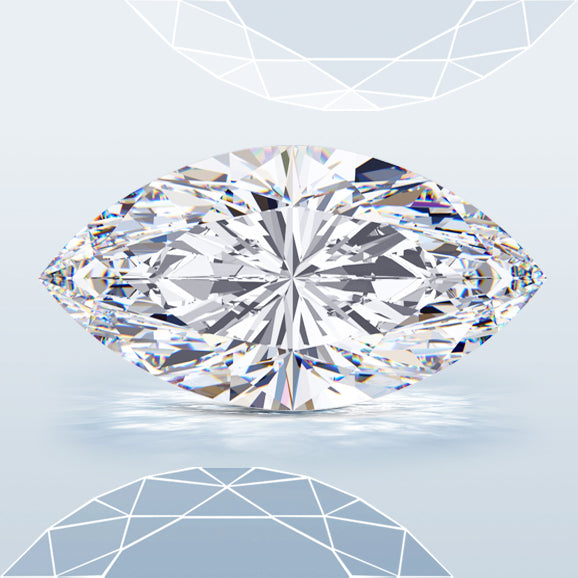
Marquise Shape Diamonds Explained
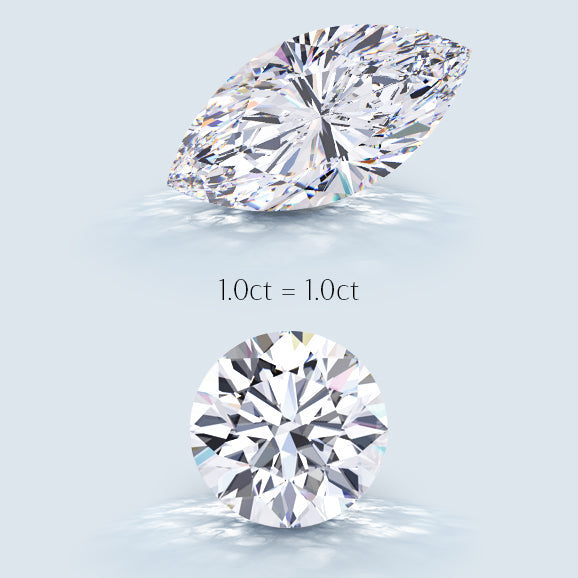
The modern marquise cut diamond is a variant of the round brilliant cut, the most popular diamond shape in recent times. The round shape is elongated to an ellipse with pointed ends using a similar pattern of facets to create the brilliance and sparkle.
The origin of the cut is said to be from the court of King Louis XV of France in the 18th century. The King wanted a diamond cut in a shape reminiscent of the smile of the Marquise de Pompadour, the King’s official mistress. The oval shape of the marquise gives it one of the largest crown areas, carat weight for carat weight, of any diamond shape.
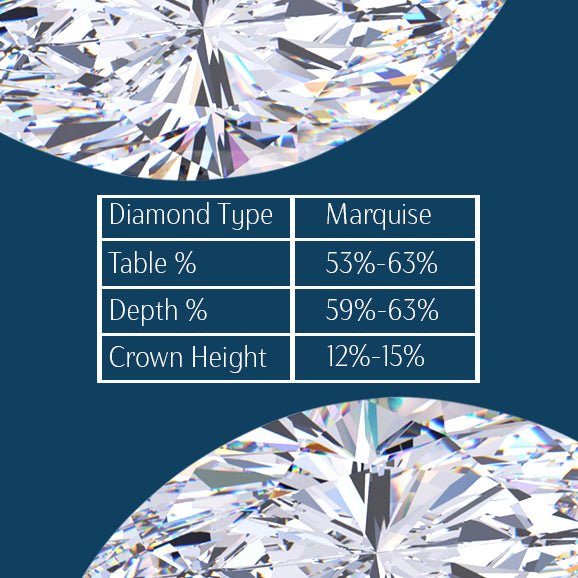
Size Can Be An Illusion
The marquise cut is derived from the round brilliant cut, the most brilliant of all cuts. This means that the marquise has most of the visual appeal of the round cut. The shape maximises the perceived size of the diamond, making it an impressive diamond cut at a reasonable cost. The overall effect gives a somewhat historic and elegant effect.
So that your marquise cut diamond looks as magnificent as possible, the proportions need to be right. The following table shows a range of acceptable ratios.
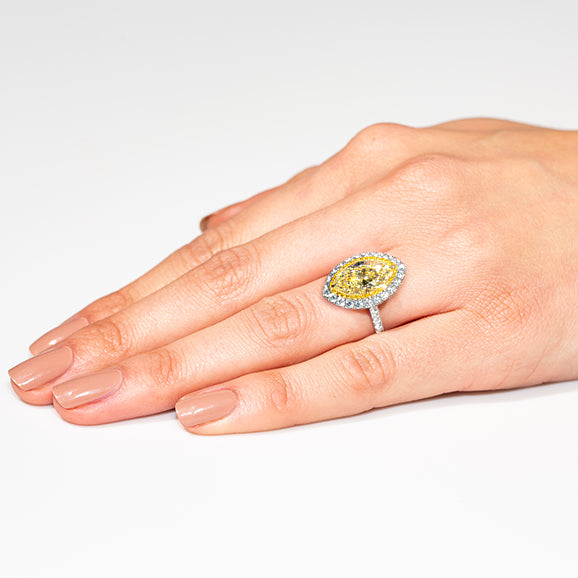
To give an idea of how the shape of the marquise affects its perceived size, as compared to a round cut ring; a 1 carat round cut diamond will have a diameter of approximately 6.4mm. The marquise will measure about 10.5mm long and 5mm wide. People will notice the length and be hugely impressed while not seeing the slightly smaller width!

An Ideal Cut For Delicate Fingers
The elongated oval shape of the marquise makes it an excellent choice for rings because its length flatters fingers, making them appear longer and slenderer. Some wearers have chosen to use the cut horizontally across the fingers, but this loses the slimming effect of the vertical orientation.
Buyers of this shape of diamond are often fans of vintage heirloom jewellery. The original marquise cut has been popular for many years and is often seen in heirloom jewellery. The updated, brilliant-cut version gives the best of the old and the new.
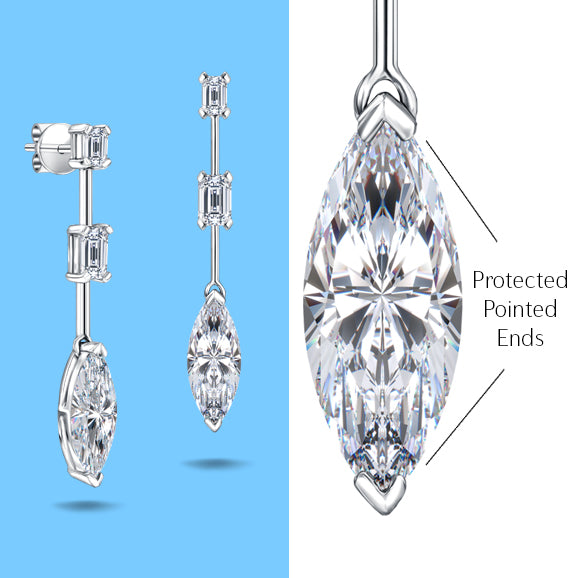
Buying Notes For Marquise Diamonds
- Check the proportions of the marquise. Look for diamonds that are approximately twice as long as they are broad.
- Marquise cut diamonds can have an effect called bowtie. Bowtie is where the facets of the diamond were not cut in perfect alignment. The result of misalignment is that across the width of the diamond, there is a visibly darker area that looks like a bow tie. The bowtie is due to light leaking from the misaligned facets. If the effect is not severe, then it is not an issue, it can even be a feature of the ring. If the bowtie attracts attention when looking at the diamond, then the stone should be rejected.
- A marquise diamond can be sensitive to the colour. If a stone is off-white the shading will be noticeable at the tips due to their thinness. If budget allows, choose a colour grade higher than you would for a round diamond. If that is not possible, check the piece you are planning to buy and make sure that you are happy with the colour you see.
- Symmetry is vital in a marquise because of the pointed ends. Make sure the points are in alignment for the diamond that you are buying.
- Carefully check the widest part of any stone that you are planning to buy. The wide section makes it hard for inclusions to be concealed so you will want to ensure that any inclusions in this part of the diamond are minimal.
- Protect the ends of the marquise by choosing a setting that does not expose the pointed ends of the diamond to chipping and cracking.
- Inspect the stone you are buying carefully. Marquise cut diamonds are prone to chips due to their shape, so make sure that it is not damaged before it leaves the jeweller’s shop!
- Marquise cut diamonds are an unusual shape that polarises opinion. If buying a marquise diamond as a gift, try to gauge the likely impression that the shape will make on the recipient before making the purchase!
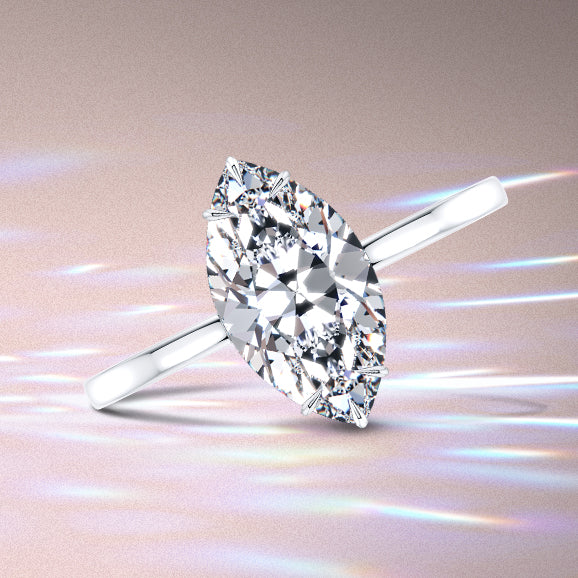
Choosing The Right Setting
More than most diamond shapes, the marquise needs careful consideration of the setting.
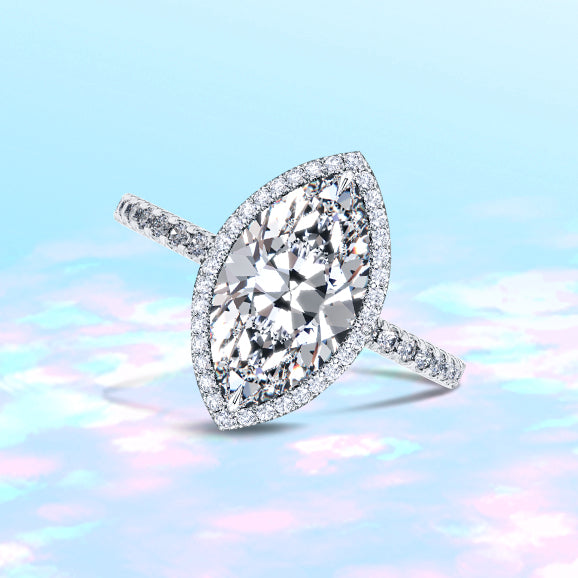
Solitaire Settings
Marquise cut diamonds make a statement of their own. A solitaire setting allows the diamond to make its own statement. In a solitaire setting, the focus will be only upon the gem itself. The bigger your diamond, the bigger the impression that a solitaire setting can make.
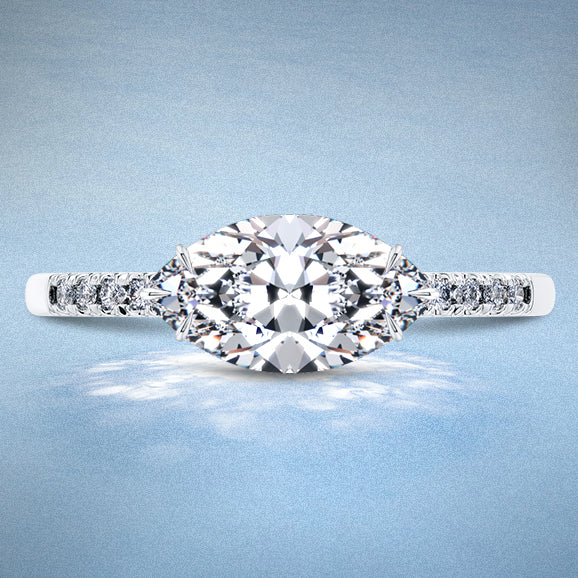
Halo Setting
A halo setting surrounds the centre stone with a ring of smaller diamonds. A halo setting makes the central gem look larger, typically giving the illusion of being a carat larger but at a much lower cost. At the same time, the ring gains a more glamorous look.
For a more unusual look, consider pave diamonds running around the band of the ring that will sparkle from all directions.
East-West Setting
East-West is not an official name for a setting but rather a way of aligning the diamond. Typically, a marquise cut diamond is aligned along the length of the finger, but setting the stone across the fingers creates a big visual impact. This effect works best with larger diamonds of 2 carats or higher, which will be wider than the width of the finger. With a smaller diamond, the width of the marquise will be less than the width of the ring’s band losing the effect. With smaller gems, vertical alignment is best.
The marquise shape of diamond is an exciting, different shape of gemstone. This shape can flatter the hand of the wearer, presenting an elegant touch to one’s jewellery.
Marquise cut diamonds have the sparkle of the most brilliant cuts, look bigger in jewellery and cost less, carat for carat.
What’s not to love about the marquise diamond shape?